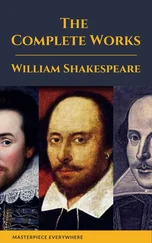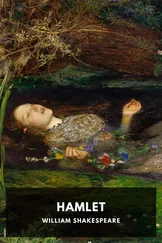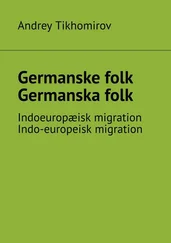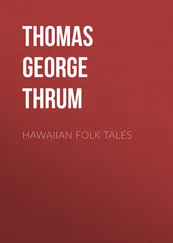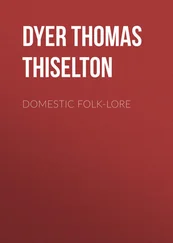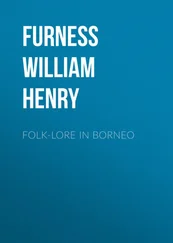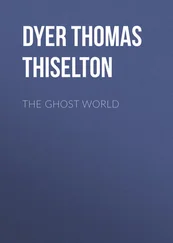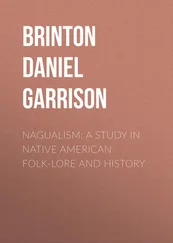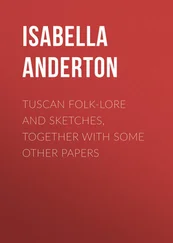Thomas Dyer - Folk-lore of Shakespeare
Здесь есть возможность читать онлайн «Thomas Dyer - Folk-lore of Shakespeare» — ознакомительный отрывок электронной книги совершенно бесплатно, а после прочтения отрывка купить полную версию. В некоторых случаях можно слушать аудио, скачать через торрент в формате fb2 и присутствует краткое содержание. Жанр: foreign_antique, foreign_prose, на английском языке. Описание произведения, (предисловие) а так же отзывы посетителей доступны на портале библиотеки ЛибКат.
- Название:Folk-lore of Shakespeare
- Автор:
- Жанр:
- Год:неизвестен
- ISBN:нет данных
- Рейтинг книги:4 / 5. Голосов: 1
-
Избранное:Добавить в избранное
- Отзывы:
-
Ваша оценка:
- 80
- 1
- 2
- 3
- 4
- 5
Folk-lore of Shakespeare: краткое содержание, описание и аннотация
Предлагаем к чтению аннотацию, описание, краткое содержание или предисловие (зависит от того, что написал сам автор книги «Folk-lore of Shakespeare»). Если вы не нашли необходимую информацию о книге — напишите в комментариях, мы постараемся отыскать её.
Folk-lore of Shakespeare — читать онлайн ознакомительный отрывок
Ниже представлен текст книги, разбитый по страницам. Система сохранения места последней прочитанной страницы, позволяет с удобством читать онлайн бесплатно книгу «Folk-lore of Shakespeare», без необходимости каждый раз заново искать на чём Вы остановились. Поставьте закладку, и сможете в любой момент перейти на страницу, на которой закончили чтение.
Интервал:
Закладка:
217
See D’Israeli’s “Curiosities of Literature,” vol. iii. p. 84.
218
See Thornbury’s “Shakespeare’s England,” vol. i. pp. 311-322.
219
Nares’s “Glossary,” vol. i. p. 394.
220
Harting’s “Ornithology of Shakespeare,” p. 269.
221
Aldis Wright’s “Notes to ‘The Tempest’,” 1875, pp. 120, 121.
222
See Dyce’s “Shakespeare,” vol. i. p. 245.
223
See Strutt’s “Sports and Pastimes,” 1876, pp. 60-97, and “Book of Days,” 1863, vol. ii. pp. 211-213; Smith’s “Festivals, Games, and Amusements,” 1831, p. 174.
224
“A hawk full-fed was untractable, and refused the lure – the lure being a thing stuffed to look like the game the hawk was to pursue; its lure was to tempt him back after he had flown.”
225
In the same play (iv. 2) Hortensio describes Bianca as “this proud disdainful haggard.” See Dyce’s “Glossary,” p. 197; Cotgrave’s “French and English Dictionary,” sub. “Hagard;” and Latham’s “Falconry,” etc., 1658.
226
“To whistle off,” or dismiss by a whistle; a hawk seems to have been usually sent off in this way against the wind when sent in pursuit of prey.
227
Dyce’s “Glossary,” p. 77; see “Twelfth Night,” ii. 5.
228
The use of the word is not quite the same here, because the voyage was Hamlet’s “proper game,” which he abandons. “Notes to Hamlet,” Clark and Wright, 1876, p. 205.
229
See Dyce’s “Glossary,” p. 456; Harting’s “Ornithology of Shakespeare,” p. 39; Tuberville’s “Booke of Falconrie,” 1611, p. 53.
230
Also in i. 2 we read:
“And fortune, on his damned quarrel smiling, Show’d like a rebel’s whore.”
Some read “quarry;” see “Notes to Macbeth.” Clark and Wright, p. 77. It denotes the square-headed bolt of a cross-bow; see Douce’s “Illustrations,” 1839, p. 227; Nares’s “Glossary,” vol. ii. p. 206.
231
See Spenser’s “Fairy Queen,” book i. canto xi. l. 18:
“Low stooping with unwieldy sway.”
232
Ed. Dyce, 1857, p. 5.
233
See “3 Henry VI.” i. 1.
234
A quibble is perhaps intended between bate, the term of falconry, and abate, i. e. , fall off, dwindle. “Bate is a term in falconry, to flutter the wings as preparing for flight, particularly at the sight of prey.” In ‘1 Henry IV.’ (iv. 1):
“‘All plumed like estridges, that with the wind Bated, like eagles having lately bathed.’”
– Nares’s “Glossary,” vol. i. p. 60.
235
“Unmann’d” was applied to a hawk not tamed.
236
See Singer’s “Notes to Shakespeare,” 1875, vol. x. p. 86; Nares’s “Glossary,” vol. i. p. 448.
237
See passage in “Taming of the Shrew,” iv. 1, already referred to, p. 122.
238
Also in same play, i. 3.
239
Turbervile, in his “Booke of Falconrie,” 1575, gives some curious directions as “how to seele a hawke;” we may compare similar expressions in “Antony and Cleopatra,” iii. 13; v. 2.
240
Nares’s “Glossary,” vol. ii. pp. 777, 778; cf. Beaumont and Fletcher, “Philaster,” v. 1.
241
Imp, from Anglo-Saxon, impan , to graft. Turbervile has a whole chapter on “The way and manner how to ympe a hawke’s feather, howsoever it be broken or bruised.”
242
Harting’s “Ornithology of Shakspeare,” p. 72.
243
The reading of the folios here is stallion; but the word wing, and the falconer’s term checks , prove that the bird must be meant. See Nares’s “Glossary,” vol. ii. p. 832.
244
See kestreland sparrow-hawk.
245
“Notes to Hamlet,” Clark and Wright, 1876, p. 159.
246
Ray’s “Proverbs,” 1768, p. 196.
247
Quoted in “Notes to Hamlet,” by Clark and Wright, p. 159; see Nares’s “Glossary,” vol. i. p. 416.
248
That is, made by art: the creature not of nature, but of painting; cf. “Taming of the Shrew,” iv. 3; “The Tempest,” ii. 2.
249
Nares’s “Glossary,” vol. ii. p. 482.
250
Harting’s “Ornithology of Shakespeare,” p. 74.
251
“Notes,” vol. iii. pp. 357, 358.
252
“Description of England,” vol. i. p. 162.
253
“Glossary to Shakespeare,” p. 88.
254
Sir Thomas Browne’s “Vulgar Errors,” bk. iii. chap. 10.
255
Also to the buzzard, which see, p. 100.
256
Singer’s “Shakespeare,” vol. iv. p. 67.
257
“Glossary,” p. 243.
258
“Glossary,” vol. ii. p. 495; see Yarrell’s “History of British Birds,” 2d edition, vol. ii. p. 482.
259
Ray’s “Proverbs,” 1768, p. 199.
260
Cf. “Midsummer-Night’s Dream” (iv. 1). “the morning lark;” “Romeo and Juliet” (iii. 5), “the lark, the herald of the morn.”
261
Nares’s “Glossary,” vol. ii. p. 886; Douce’s “Illustrations of Shakespeare,” 1839, p. 217.
262
Chambers’s “Popular Rhymes of Scotland,” 1870, p. 192.
263
See “English Folk-Lore,” p. 81.
264
Henderson’s “Folk-Lore of Northern Counties,” p. 127.
265
Thorpe’s “Northern Mythology,” vol. ii. p. 34; Brand’s “Pop. Antiq.,” 1849, pp. 215, 216; see also Harland and Wilkinson’s “Lancashire Folk-Lore,” 1867, pp. 143, 145.
266
“Atmospherical Researches,” 1823, p. 262.
267
Sir Thomas Browne’s Works, 1852, vol. i. p. 378.
268
See “Book of Days,” vol. i. p. 515.
269
Southey’s “Commonplace Book.” 5th series. 1851, p. 305.
270
Ovid’s “Metamorphoses,” bk. vi. ll. 455-676; “Titus Andronicus,” iv. 1.
271
Cf. “Lucrece,” ll. 1079, 1127.
272
See Yarrell’s “History of British Birds,” 1856, vol. i. p. 30; Nares’s “Glossary,” vol. ii. p. 620; also Pennant’s “British Zoology;” see Peele’s Play of the “Battle of Alcazar” (ii. 3), 1861, p. 28.
273
Called estridge in “1 Henry IV.” iv. 1.
274
See Brand’s “Pop. Antiq.,” 1849, vol. iii. p. 365.
275
“Animal Kingdom,” 1829, vol. viii. p. 427.
276
See Sir Thomas Browne’s Works, 1852, vol. i. pp. 334-337.
Читать дальшеИнтервал:
Закладка:
Похожие книги на «Folk-lore of Shakespeare»
Представляем Вашему вниманию похожие книги на «Folk-lore of Shakespeare» списком для выбора. Мы отобрали схожую по названию и смыслу литературу в надежде предоставить читателям больше вариантов отыскать новые, интересные, ещё непрочитанные произведения.
Обсуждение, отзывы о книге «Folk-lore of Shakespeare» и просто собственные мнения читателей. Оставьте ваши комментарии, напишите, что Вы думаете о произведении, его смысле или главных героях. Укажите что конкретно понравилось, а что нет, и почему Вы так считаете.



